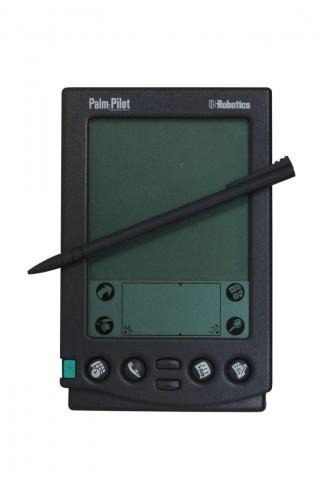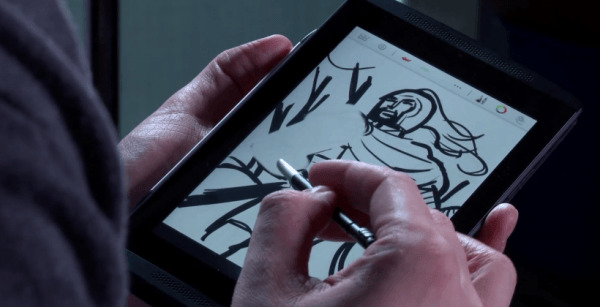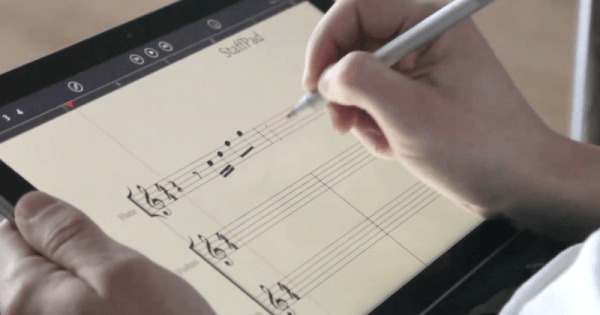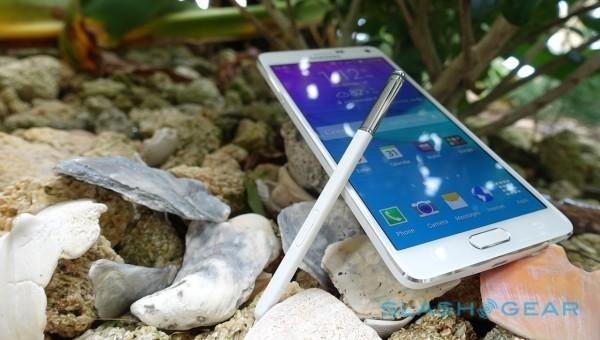Making a case for the stylus today
With Samsung's next Unpacked event coming up in a few days, and a new Galaxy Note phablet with it, our minds might naturally begin to wonder about Samsung's almost niche product line. Considering the Galaxy Note could very well be a flagship product of its own, it's only natural to ask whether there's still a point to the stylus. Bad puns aside, we take a look at the past to divine the future, whether the digital pen, like its analog counterpart, is indeed just as mighty as the sword. Or in this case, the finger.
A short trip down memory lane
It might be unimaginable to this current mobile generation but there was a time when styluses were more the norm than the exception. This was during the time of the mighty Palm Pilots, spiritual predecessors of today's multi-functional smartphones, at least in terms of productivity. Rivaling BlackBerry when it came to being the darling of office workers, Palm Pilots waved styluses like a magic wand while BlackBerries stuck to their QWERTYs. The stylus was born both out of necessity and fashion. Touchscreens were still uncommon and expensive. Styluses practically provided the only direct, screen-based input method available. It also looked nicer and "more professional" poking at your PDA with a stick rather than thumbing it like a Game Boy.

Then came Steve Jobs and the iPhone. It was beautiful and was almost all screen. Jobs mocked physical and mechanical input methods and made a laughing stock of the stylus, a fossil in today's digital age. Apple would set a design trend that others would follow, embracing touchscreens completely and forgetting there was such a thing as a stylus.
Then at IFA 2011, Samsung, ever the contrarian, unveiled the Galaxy Note. It was almost everything the iPhone was not. It was huge and it had a built-in stylus. Naturally, Apple fans ridiculed it to no end. But now in its 5th generation (7 if you count a Neo and an Edge), with 4 tablet variants, Samsung continues to prove that there is at least still a market for a stylus-bearing phablet.
A creative tool
"If you see a stylus, they blew it." – Steve Jobs on the iPad
The first styluses on mobile devices, those on Palms to be exact, were crude pointing devices. They were practically plastic sticks you used to poke around the screen. To that extent, the late Jobs did have a point. It would have been a terrible design flaw in this day and age if you actually needed to use a precision tool on a touchscreen device like a smartphone. If you have a button or a control that was too small to stab with a finger, then the designer, whether of the app or the operating system, failed.
But today's styluses have long evolved away from their primitive ancestors. While in some cases more precise than a finger, they are no longer simple pointing sticks used to navigate user interfaces. Even the stubby capacitive styluses you can buy at almost no cost are being used for something far greater: creating content. While you can indeed write or draw with your fingers, just as you can in the real world, there are still some things better expressed and done with a longer, more precise stick. Whether it be for sketching as with a pencil, scribbling handwritten notes, or even making music, the stylus gives more control that no finger, not even a mouse, can offer.

It is no wonder then that Samsung would use Wacom's technology for its Galaxy Note line. While the stylus has been a matter of debate in the mobile world, in the digital realm its purpose remains unquestioned. Digital artists swear by their tablets, which, naturally, use pens and styluses to do their magic. And among those digital tablets, Wacom is the leading name.
That was really the innovation that Samsung introduced with the Galaxy Note line. Not the mere fact that it had a stylus, but one that had almost the same capabilities as the ones that artists use to create captivating masterpieces. The precision, pressure sensitivity, and, more importantly, the ready availability of the stylus gave the Galaxy Notes an edge (no pun intended) and an appeal that echoes to this day.
A pen-filled future?
The mobile world is less aggressive against styluses today than it was during the birth of the iPhone. We're seeing quite a few tools coming from reputed brands like Adonit, Wacom, and Adobe. Common to them all is the fact that these companies' businesses revolve around creativity. Microsoft has also been pushing its own pen focus, acquiring N-Trig's technology to rival Wacom's. NVIDIA has its own stylus technology that is so far limited to its own tablets. And some smartphone makers are also trying to integrate styluses in their devices, though more like the crude pointing devices of ages past.
The one caveat to all of this is that most of these advancements are happening on tablets. For all their creative advantages, these styluses work best with a big writing, or drawing, surface. Tablets, therefore, make the best screens for this purpose. Sure, smartphones can be as well to some extent. After all, there are notepads and sketchbooks just as big as some smartphones. They do have to be big smartphones, though. That is why Galaxy Notes over the years have grown in size, now at 5.7 inches, and hopefully only up to 5.7 inches.

Wrap-up
The stylus for smartphones isn't going away any time soon as much as Steve Jobs may have wanted. It might even be ironic that Apple is now rumored to be eying a stylus-bearing iPad of its own, a subtle concession that the tool is indeed beneficial in professional situations.
The question then becomes whether a stylus remains relevant to smartphones or if Samsung is now just grasping at straws to keep a legacy alive. The answer isn't a resounding yes but is still a yes. A stylus, especially the kind that the Galaxy Note bears, is great for precision work. Not for precision poking at buttons and sliders but at precision line art, precision handwriting, precision creativity. They remain great and will continue to be so.
But if they're so great, why aren't more manufacturers putting in the feature? Two reasons really. Sadly, pressure sensitive pen technology isn't a commodity yet. Meaning, it's not that affordable to license it, especially from someone like Wacom. There are others out there, of course, (though one has now been gobbled up by Microsoft), yet they don't seem that interested to venture into mobile devices and stray away from their core drawing tablet business. We can only hope that eventually these too will be as common as touchscreens are today.
And the second reason? that aforementioned screen size. But with flagship smartphones growing in size year after year, that might not really be a problem soon.

